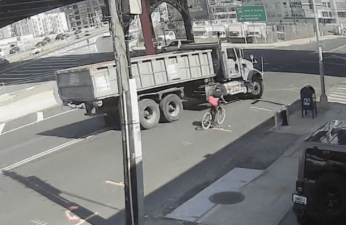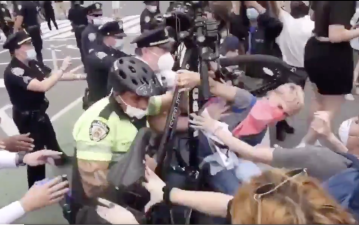NYPD Still Withholds Crucial Traffic Enforcement Data From the Public
How effective is NYPD traffic enforcement? Are police enforcement actions making city streets safer and reducing injuries and fatalities? The public doesn’t know, because the enforcement data released by NYPD is extremely shallow.
Witness the numbers NYPD handed over to the Times about a recent five-day “Bicycle Safe Passage” enforcement action (above), which took place from June 20 to June 24. The figures show citywide summonses during that period for red light-running, failure to yield to cyclists and pedestrians, blocking bike lanes, no-standing zone violations, and double-parking compared to the same five-day period in 2014.
But simply counting tickets is not sufficient. It doesn’t tell you where the summonses were issued, how that correlates to dangerous locations, or whether the enforcement had any impact on motorist behavior and traffic injury rates.
For years, advocates and elected officials have called on NYPD to release more detailed summons data. Right now, the department doesn’t put out anything more detailed than precinct-by-precinct summaries of summonses. The data doesn’t show the streets and intersections where police issue tickets.
If NYPD mapped its summons activity, then the public could see, for instance, whether enforcement patterns are linked to frequent crash locations.
But NYPD has repeatedly resisted the notion that it should provide more detailed information on its traffic enforcement practices. Even in the Vision Zero era, the department is still pointing to ticket counts as proof that police are protecting the public from dangerous driving, rather than giving the public a full accounting of how it is applying traffic laws.


